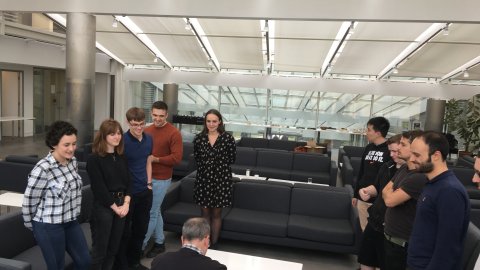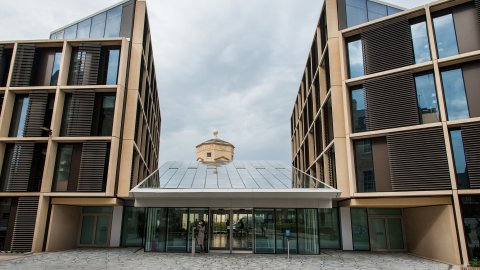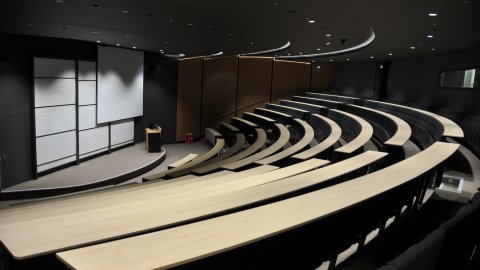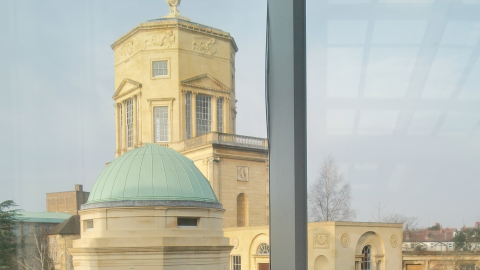14:00
A proximal quasi-Newton trust-region method for nonsmooth regularized optimization
Abstract
We develop a trust-region method for minimizing the sum of a smooth term f and a nonsmooth term h, both of which can be nonconvex. Each iteration of our method minimizes a possibly nonconvex model of f+h in a trust region. The model coincides with f+h in value and subdifferential at the center. We establish global convergence to a first-order stationary point when f satisfies a smoothness condition that holds, in particular, when it has Lipschitz-continuous gradient, and h is proper and lower semi-continuous. The model of h is required to be proper, lower-semi-continuous and prox-bounded. Under these weak assumptions, we establish a worst-case O(1/ε^2) iteration complexity bound that matches the best known complexity bound of standard trust-region methods for smooth optimization. We detail a special instance in which we use a limited-memory quasi-Newton model of f and compute a step with the proximal gradient method, resulting in a practical proximal quasi-Newton method. We describe our Julia implementations and report numerical results on inverse problems from sparse optimization and signal processing. Our trust-region algorithm exhibits promising performance and compares favorably with linesearch proximal quasi-Newton methods based on convex models.
This is joint work with Aleksandr Aravkin and Robert Baraldi.
-
A link for this talk will be sent to our mailing list a day or two in advance. If you are not on the list and wish to be sent a link, please contact @email.
Intro to Lawrence-Venkatesh's proof of Mordell-Faltings
Abstract
This talk will be the first in a spin-off series on the Lawrence-Venkatesh approach to showing that every hyperbolic curve$/K$ has finitely many $K$-points. In this talk, we will give the overall outline of the approach and prove several of the preliminary results, such as Faltings' finiteness theorem for semisimple Galois representations.
North Meets South
Abstract
Jaclyn Lang
Explicit Class Field Theory
Class field theory was a major achievement in number theory
about a century ago that presaged many deep connections in mathematics
that today are known as the Langlands Program. Class field theory
associates to each number field an special extension field, called the
Hilbert class field, whose ring of integers satisfies unique
factorization, mimicking the arithmetic in the usual integers. While
the existence of this field is always guaranteed, it is a difficult
problem to find explicit generators for the Hilbert class field in
general. The theory of complex multiplication of elliptic curves is
essentially the only setting where there is an explicit version of class
field theory. We will briefly introduce class field theory, highlight
what is known in the theory of complex multiplication, and end with an
example for the field given by a fifth root of 19. There will be many
examples!
Jan Sbierski
The strength of singularities in general relativity
One of the many curious features of Einstein’s theory of general relativity is that the theory predicts its own breakdown at so-called gravitational singularities. The gravitational field in general relativity is modelled by a Lorentzian manifold — and thus a gravitational singularity is signalled by the geometry of the Lorentzian manifold becoming singular. In this talk I will first review the classical definition of a gravitational singularity along with a classification of their strengths. I will conclude with outlining newly developed techniques which capture the singularity at the level of the connection of Lorentzian manifolds.






